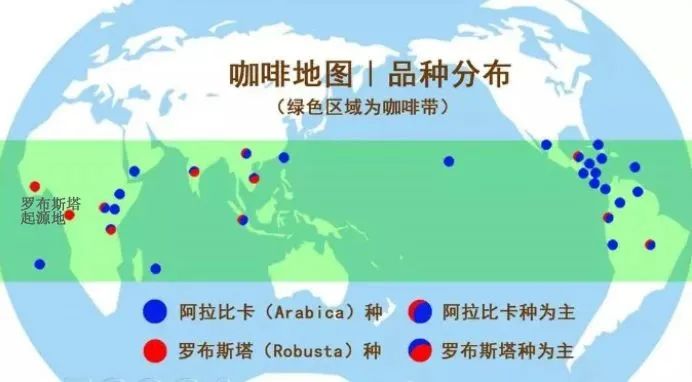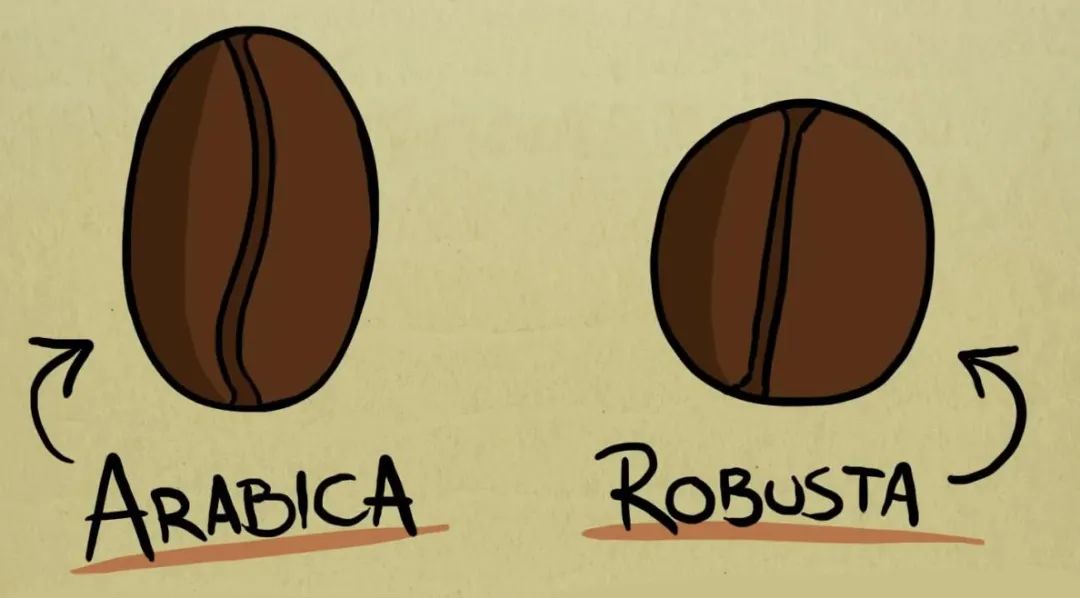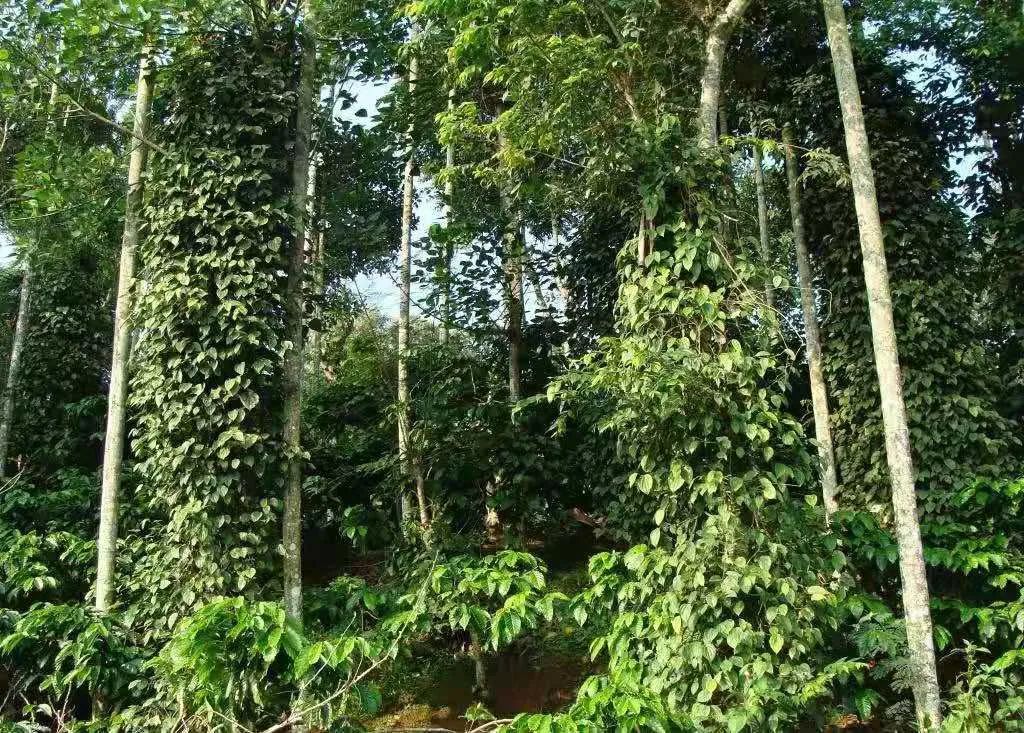Is Robusta coffee a boutique coffee bean? Why are Luodou so cheap? How much half a kilo
Coffee is divided into three varieties, Arabica, Robusta and Liberika. Among them, only Arabica and Robusta are of commercial value. In the boutique coffee circle, few people mention Robusta coffee beans. In daily life, we often see merchants who claim that their coffee beans are 100% Arabica coffee beans. All this is full of Arabica's beloved rich daughter and Robusta's dirty, poor child.
Robsta's birthplaces, Arabica and Robusta, both originated in Africa. Arabica is a small kind of coffee, originated from the Ethiopian plateau, high altitude, and out of Ethiopia, through the port of Mocha out of coffee, seeds scattered around the world after centuries of cultivation, but also distinguish more detailed varieties, such as the commonly heard tin card, bourbon, Rosa, Kaddura and so on all belong to Arabica coffee.

Robusta belongs to medium seed coffee, which originates from the Congo basin on the west coast of Africa. If it is to be strictly classified according to botany, it should be called "Canefra coffee species" (Congolese species), which corresponds to the same level of "Arabica coffee species". Robusta is just one of the varieties of Canefra coffee, just as the iron pickup is one of the varieties of Arabica coffee.

The reason why Robusta is far more famous than Canefra is that its offspring are unworthy, only Robusta is used for commercial cultivation by humans, and the others are still in a primitive wild state. So now it is generally called medium-grain coffee as Robusta coffee. But in terms of artificial domestication, Arabica was centuries earlier than Robusta, a new variety discovered by a Belgian scholar in Congo in 1898, and then because of global leaf rust. Robusta, with excellent disease resistance, was introduced to the disaster area.

Robusta has also been popular because of its high caffeine content and fat, which was often used as a recipe for espresso beans during the period when espresso was popular all over the world. at that time, people liked coffee in large part to get caffeine.

However, after the concept of boutique coffee was put forward, people began to pay attention to the flavor of the place of origin. Robusta's own bitter taste, as well as walnut, peanut, hazelnut, smoked flavor, these flavors appear in coffee is not very good performance. The most important thing is that after the localization of its counterpart Arabica, the performance of its flavor is far better than that of Robusta. This is a congenital problem. Robusta's flavor performance is far less pleasant than Arabica, which is why people tend to prefer Arabica in their choice.

Congenital deficiency, acquired disorder Qianjie believes that in the ranks of boutique coffee, coffee flavor comes first, caffeine is no longer the only purpose for people to drink coffee. Robusta's advantages instantly turned to disadvantages. Light-baked Arabica coffee will show flower-and fruit-like aroma and acidity, which makes people linger. If Robusta is made into a light bake, the taste of cereal, almonds and age-old acidity is contradictory. Generally speaking, with the current Robusta, there is no hope on the shallow bake track.

And deep drying this track, Robusta's suffering, after deep drying performance to play incisively and vividly. Well, it's too bitter, but it's also fragrant. For example, Vietnam often drinks robusta coffee beans. They like the aroma of robusta coffee, but forget the bitterness, so they add condensed milk or eggs to the black coffee to neutralize the bitterness of the coffee.

Some people will say that Robusta grew up in a worse environment than Arabica, and the flavor of Arabica coffee at low altitude is not good either. So some people plant Robusta at high altitudes and take good care of them in order to get rid of the excruciating smell. There is a boutique Robusta known as the Indian "coffee royal" Robusta coffee beans. This is the standard of growing boutique Arabica coffee beans to grow robusta coffee beans. And this coffee bean also shows quite clean, without the inconvenient flavor of cheap Robusta. Thicker, calmer palate and intense walnut, peanut, hazelnut and wheat flavors as if you were eating peanut butter and hazelnut. It is true that improving the level of planting can improve the flavor quality of coffee, but Robusta is Robusta, and its genes determine that it cannot taste like Arabica. It's not that Robusta tastes a little worse than Arabica. Robusta won't stand out while the popular flavor is still inclined to Arabica's flavor. The public will only use Arabica's standards to measure Robusta, although this is unfair, but this is the reality. Since it is not delicious, what does Robusta do? the advantage of Robusta is that it is cheap. Take Brazilian coffee as an example, the price of ordinary robusta is only half that of ordinary Arabica coffee. The other is its mellowness and caffeine, both of which are better than Arabica. Therefore, when these three advantages are put together, acting as an instant raw material becomes its best attribution. Of course, some of the more high-quality Luodou will appear as Italian mixed beans or original Robusta coffee beans. To tell you the truth, Qianjie has tasted a Robusta made in Vietnam. The aroma of milk and cream is very rich and pleasant, but its bitterness is really shocking. Let's add milk honestly! 😓)
Important Notice :
前街咖啡 FrontStreet Coffee has moved to new addredd:
FrontStreet Coffee Address: 315,Donghua East Road,GuangZhou
Tel:020 38364473
- Prev

What if my coffee isn't strong enough? How much coffee is best ground? Non-sour coffee is recommended.
What if my coffee isn't strong enough? Today, I recommend one of the most mellow coffee beans in the world-Mantenin. Indonesia is located in Southeast Asia, and its coffee history dates back to 1696. Coffee farmers in the Netherlands are trying to find more.
- Next

Multi-person hand-brewed coffee making method how to brew black coffee powder
Recently, Qianjie received such a share: "I usually use your V60 filter cup, and the coffee tastes good when I drink it myself!" But as soon as a friend comes to the house, I'm going to roll over when I'm about to show my skills. The proportion of powder and water is all the same! It's just that I put more coffee powder to make more at once.
Related
- Beginners will see the "Coffee pull flower" guide!
- What is the difference between ice blog purified milk and ordinary milk coffee?
- Why is the Philippines the largest producer of crops in Liberia?
- For coffee extraction, should the fine powder be retained?
- How does extracted espresso fill pressed powder? How much strength does it take to press the powder?
- How to make jasmine cold extract coffee? Is the jasmine + latte good?
- Will this little toy really make the coffee taste better? How does Lily Drip affect coffee extraction?
- Will the action of slapping the filter cup also affect coffee extraction?
- What's the difference between powder-to-water ratio and powder-to-liquid ratio?
- What is the Ethiopian local species? What does it have to do with Heirloom native species?

